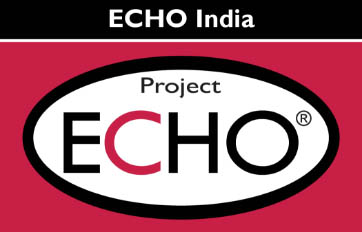Author: Dr. Subhasis Bhadra, Professor, Department of Psychiatric Social Work, M.V. Govindaswamy Center, NIMHANS
The extensive, intensive engagement of ECHO in “promoting gender equity in schools in India” is an essential step in facilitating the attainment of SDGs and a requirement for establishing women's rights as a basic human right to challenge the critical foundation of historical inequity in the form of patriarchy, and patri-focality. Patriarchy is about the superiority of men over women, whereas patri-focality is about the culture of imposing restrictions on girls/women by the women of the family and community at large. The ongoing gender equity program in schools has engaged teachers from across India representing diverse linguistic, cultural, regional, caste, and gender backgrounds. The teachers from government and private schools are representing the administrative, academic support and challenges of each segment. The program in schools started in March 2023 with substantial pre-intervention assessments with the students that will be used to understand the changes through the assessment in post-intervention.
The “gender equity in schools” program evolved based on five important premises, namely, (i) teachers as change makers can strengthen gender equity and justice through a number of reformation in the school atmosphere once they strongly believe in the need for gender equity and gain the knowledge, attitude, and skills to practice; (ii) Teachers can learn through the online interactive platform over an extended period of time ( one year) and implement the sessions for gender equity with the students in school, and gradually explore the process through experimentation, thereby documenting the learning, discussing the problems and challenges faced by them and collaboratively find solutions that are contextual; (iii) providing the literature for learning, appropriate tools/ techniques for classroom practice, ideas for further exploration are essential for the capacity building of the teachers to ensure a sustainable environment and culture for gender equity and justice; (iv) the young school students in their formative age between 10 to 18 can imbibe the concept of gender equity that will impact their ideas, knowledge, and will have a lasting sustainable change in their behaviour and practice. Therefore, future generations will be better capable of advocating for gender inequality; (v) School is the primary unit of socialization, and education is the system of character and national building. Thus, working in schools with the teachers, students, parents, and administrators has the potential to change the community practice and perception about gender in the long term.
The ongoing pilot program of “promoting gender equity in schools in India” is spread over six thematic areas over 26 sessions, encompassing the concept of gender, empowerment, gender lens, structural biases, media representation, and ultimately, empowerment of girls and women to strengthen gender perspective in the overall education system to facilitate higher participation, achievement, and aspiration among the girls through various curricular and co-curricular activities.
Multiple techniques like gender analysis, gender mainstreaming, cultivating circle of empowerment and support, use of creative expressive activities through multiple mediums (role-play drama/ nukkad natak, drawing, story writing, reel making, poster making etc,), structural analysis of the school, scanning through the textbook, use of gender-sensitive language and ultimately the practice of critical dialogue to change the thought process, attitude and action are continuously highlighted, as a basic pedagogical engagement. It is most satisfying and encouraging to learn from the participant teachers that they have started to observe and analyse many events in their schools from the gender lens and are also taking active steps to resolve them.
For example, by noticing the fact that girls stay away from science stream, teachers have conducted sessions and encouraged them to think about their career aspirations. Similarly, engaging the students in different cultural activities so that boys and girls can work and participate in club activities equally. The teachers have made a number of efforts to encourage sporting spirit among girls. Further, the teachers conducted several sessions with the students to enable them to think from the perspective of gender discrimination, empowerment, and harmonizing the sense of equity.
The project of gender equity has crucial potential to promote sustainable gender equity and justice paradigms in the educational system and structure of society that historically marginalized women and others by imposing restrictive social norms and discriminatory practices maintained through belief systems and formal/informal institutional mechanisms. Promoting gender justice is now a core strategy of ECHO that is taking a new shape by integrating a progressive gender lens in all projects across the globe. ECHO-India team is the front runner in this perspective, and upcoming DEI (diversity, equity, and inclusion) training for the project leaders of the ECHO-India team is another milestone in this journey that is being initiated to complement the core strength of leadership for embracing diversity, through inclusive practices to promote equity from all possible dimensions.
I am happy to be part of the ECHO-India Pilot Project and looking for a broader extension of the ECHO model in various important dimensions, such as the mental health of children, adolescents, youths, women, and the geriatric population, disaster preparedness, and risk reduction through psychosocial support, integrating mental health in different developmental projects on health care, entrepreneurial livelihood promotions, and peacebuilding to name a few. In the digital era of the 21st Century, the ECHO model is most promising solution for nurturing creative digital citizens across the globe who would be in a powerful and influential position to tackle emerging challenges and inculcate new innovative solutions.
